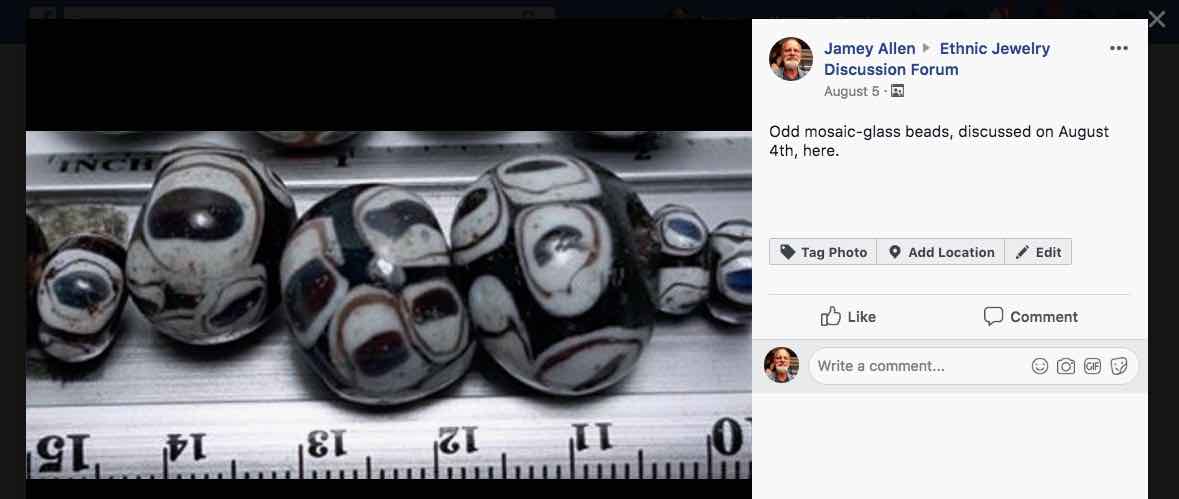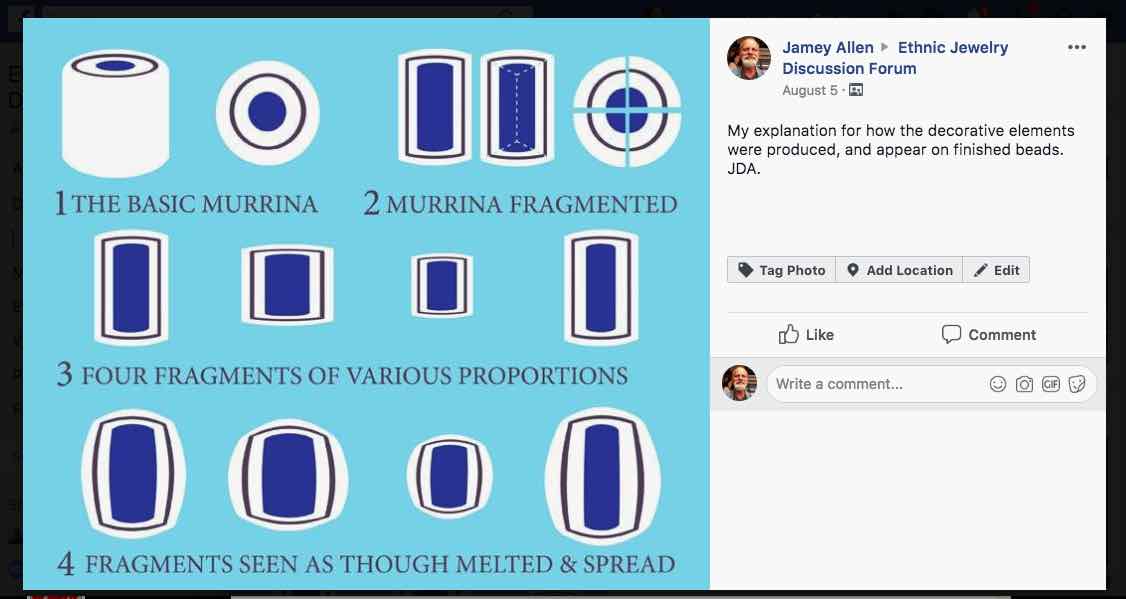| From FaceBook | |||||
| Re: Partial ID -- Beadman | Post Reply | Edit | Forum | Where am I? | |
09/25/2018, 20:34:32
Let's discuss the mosaic-glass beads posted yesterday. Here is a detail. Some twenty years ago I contemplated how this sort of decoration might occur—and came up with the following explanation. I believe the beadmakers began with a conventional murrina (a piece of layered cane—that we see at 1 in profile and cross section), and they did the following. 2 The murrina was split longitudinally into fragments, some or many of which would be roughly pie-shaped (or wedge-shaped). (On the left, the diagram shows a piece with the interior forward, that becomes the actual pattern, and the 2nd image has dotted lines to indicate its basic shape. Next to these, we see the murrina fragmented into pieces, in cross section. (It may fragment into 2, 3, 4, or many pieces, for all we know.) 3 shows four variations in size, shape, and resulting patterns. A shallow piece will have a thinner dark line, as we see on the right. 4 shows these same fragments, as we would see them, once they were placed onto a glass base, were heated, and became melted-in. This process causes the fragments to slump and spread, and also makes the pieces more-round—while usually preserving some percentage to the more-square look of the pattern. More details next. JDA.
The diagram is, of course, stylized and conventional. In practice, the pieces would be more erratic. However, the beadmakers probably chose the best ones, and used the rest for chaff. I chose a four-layer color scheme, to resemble the beads shown. The colors are dark blue, white, dirty purple, and a white exterior. These elements were placed on a black glass base. There are, of course, editions of these beads made from different canes, with other color schemes. I suppose the question may be suggested, "why did they go to this trouble?" One possibility was that the beadmakers were not greatly proficient in glassworking. (Their beads tend to be crude.) So, perhaps the murrine were imported from elsewhere, were somewhat costly (or hard to acquire), and the procedure made it possible to make more beads compared to using only the normal cross-section application. Perhaps they just wanted to make something different with the supplies at-hand.
It would be interesting for a competent glassworker to attempt to reproduce the process I have proposed—to see if the results yield similar patterns. I will repost the text and diagram at the Millefiori Group where I participate. JDA.


All rights reserved by Bead Collector Network and its users
|